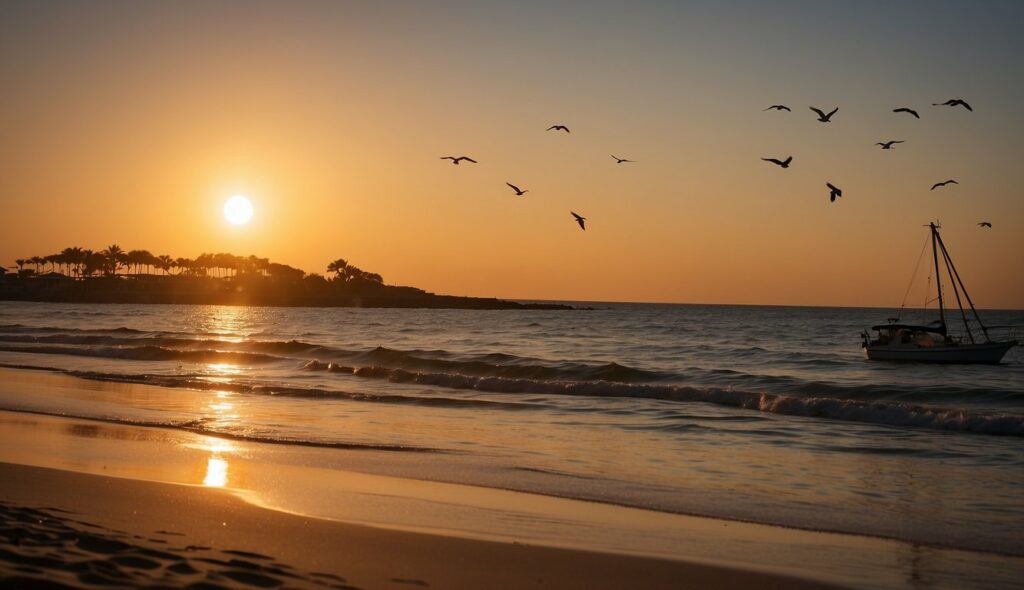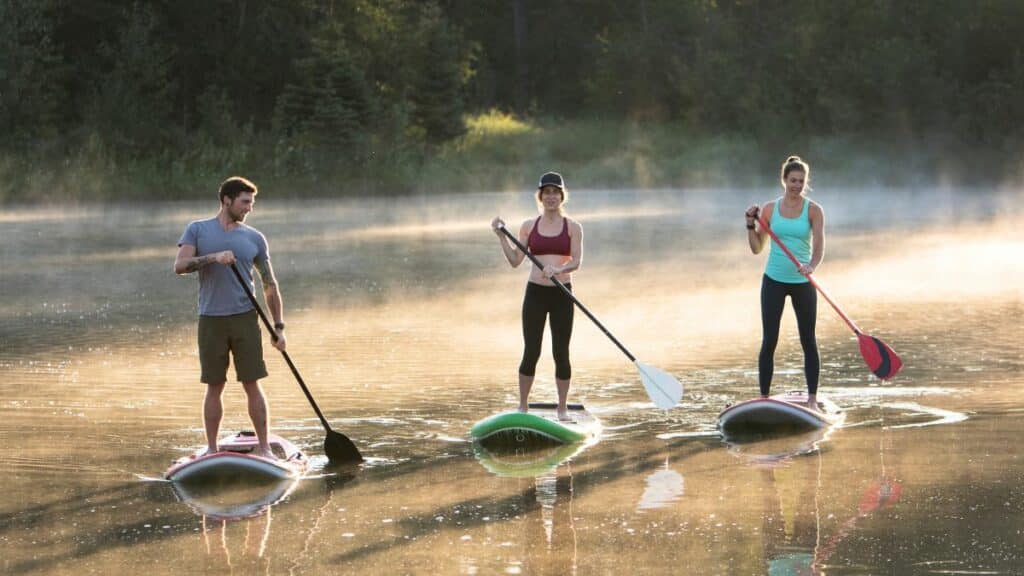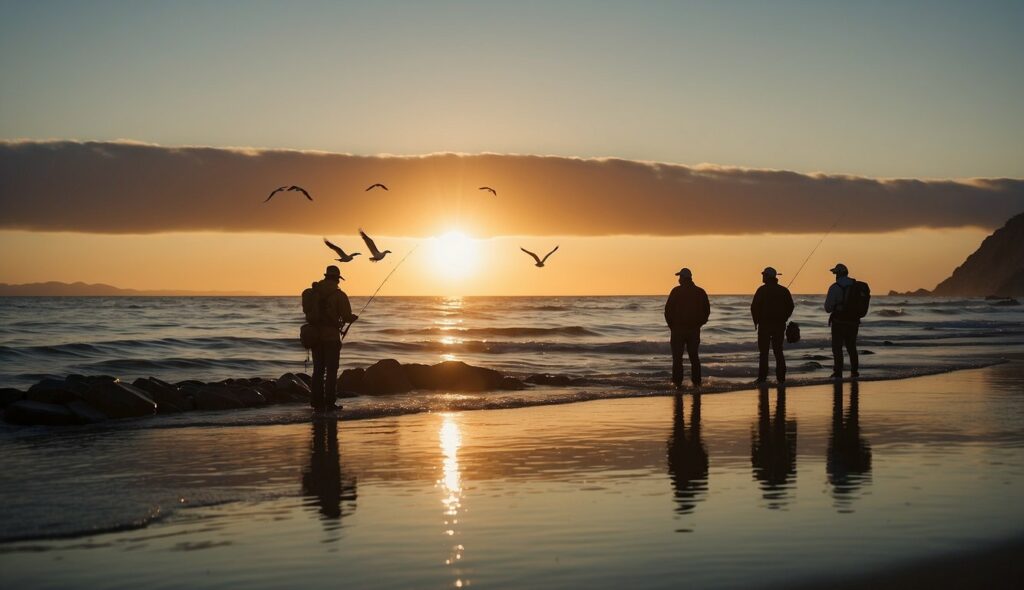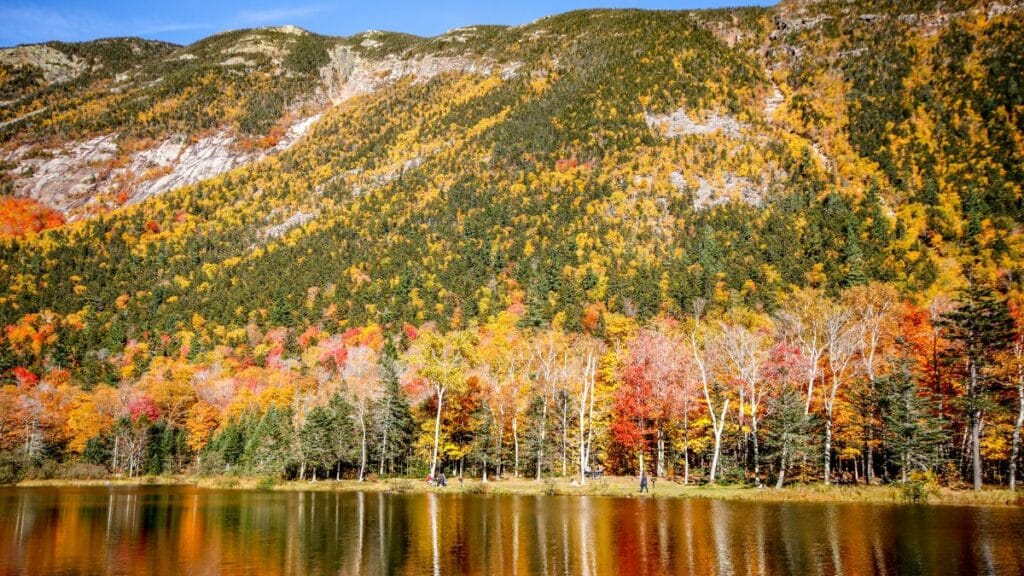Shore fishing along the Texas coast offers an abundance of opportunities for anglers. With its sprawling shoreline that kisses the Gulf of Mexico, the Lone Star State beckons you to cast a line into its diverse waters. From the bustling piers of Galveston to the tranquil beaches of South Padre Island, Texas shore fishing locations are as varied as the fish that inhabit them. You’ll enjoy the ease and accessibility of shore fishing, which requires minimal equipment and no boat, allowing you to immerse yourself directly in the natural coastal habitats. Whether you are targeting the coveted redfish, flounder, or speckled trout, Texas’s expansive coast serves up some of the best surf, jetty, and pier fishing experiences in the country.
Galveston Island State Park
Located on the upper Texas coastline, Galveston Island State Park offers a prime fishing location for enthusiasts like you. You’ll find this park nestled between the Gulf of Mexico and Galveston Bay, providing diverse options for shore fishing.
Fishing Opportunities:
- Bay Side: On the bay side of the park, your chances of catching redfish and speckled trout are excellent. Wade fishing is popular here due to the shallow waters.
- Beach Side: For those who prefer beach fishing, the Gulf side offers the opportunity to cast out into the surf.
Amenities and Accessibility:
- License-Free Fishing: Fishing in the state park doesn’t require a Texas fishing license, making it accessible for everyone.
- Facilities: Expect convenient amenities, including canoe and kayak launches, a camping area, showers, and cookout facilities.
Tips for a Successful Trip:
- On the bay side, try using live bait or soft plastics to improve your chances of a good catch.
- Visit on a weekday if you prefer a less crowded experience, as weekends tend to attract more visitors.
Padre Island National Seashore
Padre Island National Seashore (PINS) offers an unparalleled shore fishing experience in Texas. Extending over 70 miles, it is the longest stretch of undeveloped barrier island in the world. You are enveloped in a serene atmosphere, with beaches flanked by dunes, prairies, and tidal flats teeming with wildlife.
Licenses and Regulations:
To fish at PINS, you must carry a valid Texas fishing license with a saltwater stamp, unless you are under the age of 17. Always adhere to local fishing regulations to safeguard both the natural environment and your fishing experience.
Fish Species:
Numerous species are available to anglers, including:
- Redfish
- Speckled trout
- Black drum
- Flounder
- Tarpon (seasonal)
Fishing Tips:
- Surf Fishing: Popular for its easy access and abundant opportunities. For optimal results, use natural baits like shrimp or mullet.
- Bay Fishing: Laguna Madre, the shallow bay separating the island, offers tranquil spots ideal for targeting trout and redfish.
Equipment Recommendations:
- Use a 15 lb braided line for its strength and reliability when shore fishing.
- A compressed gas-powered bait launcher is prohibited; traditional casting methods are both effective and accepted.
Whether you’re wading in the surf or casting from the shore, Padre Island National Seashore invites you to its pristine shores.
Rockport Beach
When you’re planning to fish along the Texas coast, Rockport Beach offers an exceptional experience. It is known for its calmer waters and scenic views which make it an enjoyable spot not only for fishing but also for a family day out.
What You Can Expect to Catch:
- Summer & Early Fall: Prime time for redfish, flounder, and speckled trout.
- Winter & Spring: Drum and sheepshead are more prevalent during these cooler months.
Gear and Bait:
For a successful day, equip yourself with the following:
- A sturdy fishing rod and reel, about 8 to 10 feet in length.
- Live bait such as shrimp or mullet for attracting a wide variety of fish.
- Artificial lures can also be effective, especially for speckled trout.
License Requirements:
- Anyone over the age of 17 must obtain a Texas saltwater fishing license for fishing from the shore.
Facilities:
You’ll find ample parking, restrooms, and picnic areas at Rockport Beach. Piers and jetties extend into the water, providing you with access to deeper waters and potentially larger fish.
Seawolf Park
Seawolf Park, located on Pelican Island, is a prime fishing destination in Galveston. Recognized for its ample fishing opportunities, it is a site where you can enjoy casting your line from one of Galveston’s most frequented fishing piers.
Your fishing experience here might yield a variety of species, such as:
- Redfish
- Black Drum
- Spanish Mackerel
Entry Fees:
- Adult (12-64): $6.00 (resident) | $9.00 (non-resident)
- Senior (65+): $3.00 (resident) | $6.00 (non-resident)
When planning your trip, please remember to check the latest fee structure as prices can vary.
Beyond fishing, Seawolf Park hosts picnic spots and a playground. It is also steeped in history, home to the WWII submarine USS Cavalla and the destroyer escort USS Stewart, adding a layer of cultural significance to your visit.
For the best experience:
- Arrive early to secure a good spot.
- Bring appropriate tackle for the species you’re targeting.
- Respect the park rules and wildlife.
- Be prepared for the Texas sun, and stay hydrated.
Lake Fork
Recognized as one of the top destinations for largemouth bass fishing, Lake Fork boasts an impressive record. With over 65% of Texas’s top 50 largest bass, including the state record of an 18.18-pounder, your chances of a significant catch are favorable. Fishing from the shore can be as productive as boating, given the right spots and techniques.
Key Spots for Shore Fishing:
- Standing Timber: These areas provide excellent cover for bass and are accessible from the shore.
- Bridges: Around bridges often hold crappie and catfish, providing a diverse fishing experience.
Here are some tips for a successful trip:
- Early Morning or Dusk: These are prime feeding times for fish.
- Seasonal Techniques: Adjust your bait and approach with the seasons. Consider plastic worms, crankbaits, or spinnerbaits for bass.
- Be Prepared: Bring various baits to test what the fish respond to that day.
Local guides, such as Lake Fork Fishing Adventures LLC, offer extensive knowledge, which can be a valuable asset to both novice and experienced anglers alike. They can provide insight into seasonal fishing techniques and reading sonar which is especially beneficial if you are unfamiliar with Lake Fork’s unique landscape.
Lady Bird Lake
When you’re looking for a productive shore fishing spot in Texas, Lady Bird Lake in Austin is a prime location to consider. Noted for its abundant largemouth bass, the lake yields catches typically in the 2-3 pound range, but you also stand a chance of landing even larger specimens.
For panfish enthusiasts, Lady Bird Lake hosts a variety of sunfish including redear and redbreast, offering quality fishing experiences. Additionally, if you’re after something bigger, you may encounter a sizeable carp, with some reported to exceed 30 pounds.
To start fishing, explore the following accessible spots:
- Festival Beach: Located along the northern shoreline, it’s ideal for a relaxing day with family.
- Auditorium Shores: South of the lake, this area provides not just fishing opportunities but also a stunning view of the city skyline.
- Red Bud Isle: This off-leash dog park is a peninsula ideal for angling away from the city buzz.
Remember, Lady Bird Lake operates under a catch and release policy for bass, which helps maintain the fish population and size. Before heading out, verify current regulations and obtain the appropriate fishing license.
To manage your catch efficiently, consider these options:
- Use a live well: To keep your catch fresh if you intend to keep fish allowed by lake policies.
- Immediate release: Practice good sportsmanship by releasing your catch quickly back into the water.
Prepare your tackle, and enjoy a day fishing at one of Austin’s scenic urban waterscapes, where tranquility and action meet on the shore.
Boca Chica Beach
When you’re seeking a prime location for shore fishing in Texas, Boca Chica Beach should be on your list. This beach, located near Port Isabel, offers a serene fishing environment thanks to its remote nature and relatively fewer visitors compared to more popular destinations.
What You Can Catch:
- Redfish: Especially during the fall season.
- Spotted Seatrout: Best caught by wading in the shallows.
- Flounder: Often found in sandy areas.
Best Baits to Use:
- Live shrimp: Attracts a wide variety of fish.
- Cut bait: Effective for redfish and other predators.
- Topwater lures: Ideal for the active spotted seatrout.
Keep in mind that the conditions at Boca Chica can change. Always check local forecasts and be prepared for a natural and undeveloped beachfront. Make sure you’re updated on the local regulations before you head out. For your convenience, here’s a brief guide on what to expect:
| Feature | Detail |
|---|---|
| Access | Public; open for fishing and other activities |
| Development | Minimal; maintains a remote and untouched appeal |
| Amenities | Limited; prepare to bring essential supplies |
Lake Texoma State Park

When you visit Lake Texoma State Park, expect prime shoreline fishing opportunities. This park, nestled along the Texas-Oklahoma border, is acclaimed for robust populations of Striped Bass, commonly referred to as stripers. The park’s accessible amenities make it straightforward for you to get right into fishing, without needing a boat.
Key Spots for Fishing:
- Eisenhower State Park Bluffs: Known for peak Striped Bass fishing, especially in May, June, October, and December.
- Accessible Lighted Fishing Piers: Ideal for catching panfish, bass, and catfish at night.
Available Facilities:
Fishing Considerations:
- Familiarize yourself with local regulations
- Obtain the necessary permits for a hassle-free experience
Preparation Tips:
- Wear appropriate attire for changing weather conditions
- Bring water and sun protection, especially during summer when temperatures can soar.
In Lake Texoma State Park, you will find a supportive fishing infrastructure, with services such as guided tours and tackle stores nearby. Whether you’re an experienced angler or new to the sport, the park caters to your needs, setting the stage for an enjoyable fishing adventure.
San Luis Pass
When you visit San Luis Pass, located between Galveston and Freeport, you can expect a fishing experience rich with diverse catches. This area is renowned for its access to a variety of fish species, making it a prime spot for shore anglers.
Key Species to Target:
- Sheepshead: Prominent near structures and oyster reefs.
- Redfish: Look for slot reds in these waters, especially during the fall.
- Trout: While wade fishing, speckled trout are a common sight.
- Flounder: Best caught during their migration in the fall.
Fishing Tips:
- Bait: Live shrimp tends to attract a wide range of species, but mullets can also be effective.
- Tackle: Opt for medium action rods with enough sensitivity to feel a nibble yet strong enough to handle a good-sized catch.
To fish in San Luis Pass or any Texas waters, ensure you have a valid Texas fishing license.
Best Practices:
- Adhere to local regulations and catch limits to responsibly enjoy the sport.
- Due to strong currents in the pass, extra caution is always advised.
- Fish during incoming or outgoing tides for the best activity.
Whether you cast your line from a boat or the shore, San Luis Pass offers you a rewarding fishing opportunity with the added scenic beauty of Texas coastline. Remember, the conditions vary, so always check local weather reports and tide charts before heading out.
Choke Canyon State Park
When you head to Choke Canyon State Park for shore fishing, you’re in for an enriching experience. This park, nestled in the South Texas brush country, offers a diverse fishing environment. Here’s what you need to know to make the most out of your trip:
Habitats: You’ll find a range of fishing cover, from steep rocky banks to shallow brushy flats. These areas are home to a rich population of fish, making shoreline fishing exciting.
- Fish Species:
To increase your chances of a catch, consider these tips:
- Shoreline Spots: Seek out areas with flooded timber or creek channels, especially in the lower portion of the reservoir where water clarity is higher.
- Equipment: Bring along a versatile rod setup that can handle both the open flats and the challenges of fishing around structures.
Fishing Tips:
- Morning and Evening: These times can be particularly productive.
- Baits: Local regulations can dictate bait usage, but popular choices often include plastic worms for bass and cut bait for catfish.
Remember, before you cast your line, check the most recent fishing regulations for size limits and bag limits to ensure you’re in compliance.
Lastly, while Choke Canyon is known for fishing, it’s also a wildlife haven. Keep your camera ready, and enjoy the natural scenery along with your fishing adventure.
Target Species for Texas Anglers
Texas presents a diverse range of fishing opportunities. Whether you’re after freshwater favorites or saltwater giants, knowing your target species and their seasonal patterns is key to a successful outing.
Seasonal Fish Variety
Spring:
- Largemouth Bass: Best at bass lakes such as Lake Fork.
- White Bass: Look for spawning runs in rivers and creeks.
- Crappie: Lakes like Sam Rayburn and Tawakoni are hot spots for crappie.
Summer:
- Redfish & Speckled Trout: Coastal flats and bays heat up.
- Shark & Tarpon: Migrate along the beaches.
- Kingfish & Spanish Mackerel: Nearshore waters teem with activity.
Fall:
- Flounder: They move toward the Gulf, good for gigging.
- Black Drum: Coastal bays and jetties are common spots.
Winter:
- Trout & Redfish: They remain active inshore.
- Catfish & Crappie: Inland lakes offer good winter catches.
The Hunt for Trophy Fish
Saltwater Giants:
- Red Snapper & Grouper: Deep sea near wrecks and reefs.
- Tuna & Marlin: Offshore waters around oil rigs.
- Wahoo & Amberjack: Heavier tackle needed for these fighters.
Freshwater Trophies:
- Largemouth Bass: Nationally acclaimed in Texas, trophy hunters frequent Lake Fork.
- Hybrid Striped Bass: Belton Lake and Lake Texoma are prime locations.
Special Regulations for Certain Species
Red Snapper:
- Regulations vary; often you can target them even outside the federal season.
- Always check the TPWD for current rules.
Sharks:
- Certain species like Tiger Shark have strict regulations.
- Harvest is highly regulated; catch and release is encouraged for many species.
Black Basses (including largemouth):
- Often have minimum length limits.
- Bag limits may apply; ensure to verify current regulations.
Additional Resources and Information
When planning your shore fishing trip in Texas, it’s essential to have the right information at your fingertips. From local expertise to staying informed about the weather and safety, this section provides the resources you need for a successful outing.
Local Fishing Guides
If you’re new to Texas fishing, consider hiring a local guide. They can offer in-depth knowledge of local hotspots like Galveston or Lake Texoma, and they know where to find species such as red snapper, blue marlin, or speckled trout — perfect for that over-the-mantelpiece catch. Guides can also instruct you on the use of local vegetation and humps for attracting fish.
- Galveston Fishing Guides: Deep sea and bay fishing experts.
- Lake Fork Guides: Specializing in bass fishing with knowledge of underwater structure.
Weather Forecasting
Weather plays a vital role in shore fishing. Before you head out to areas like Caney Creek or Clear Lake, make sure to check the local forecasts. Use these resources for the most up-to-date conditions:
- National Weather Service: For clear weather updates.
- Weather.com: Providing hourly and 10-day forecasts.
Safety and Emergency Info
Your safety is paramount. Research local emergency services before your trip, and always have a plan. Ensure you have a Texas fishing license and are aware of the regulations. Here are key safety tips:
- First Aid Kit: Pack one and know the basics of its use.
- US Coast Guard: For deep-sea fishing trips.
Texas Parks & Wildlife Department: For licensing and regulation updates.
Meet Nic Armitage, a devoted outdoors enthusiast with an insatiable love for fishing, boating, and a wide range of adventurous activities. His passion for the great outdoors knows no bounds. Nic is your trusted guide into the world of nature, sharing his experiences and expertise on the Shaman Mountain Sports and Outdoors Blog.





